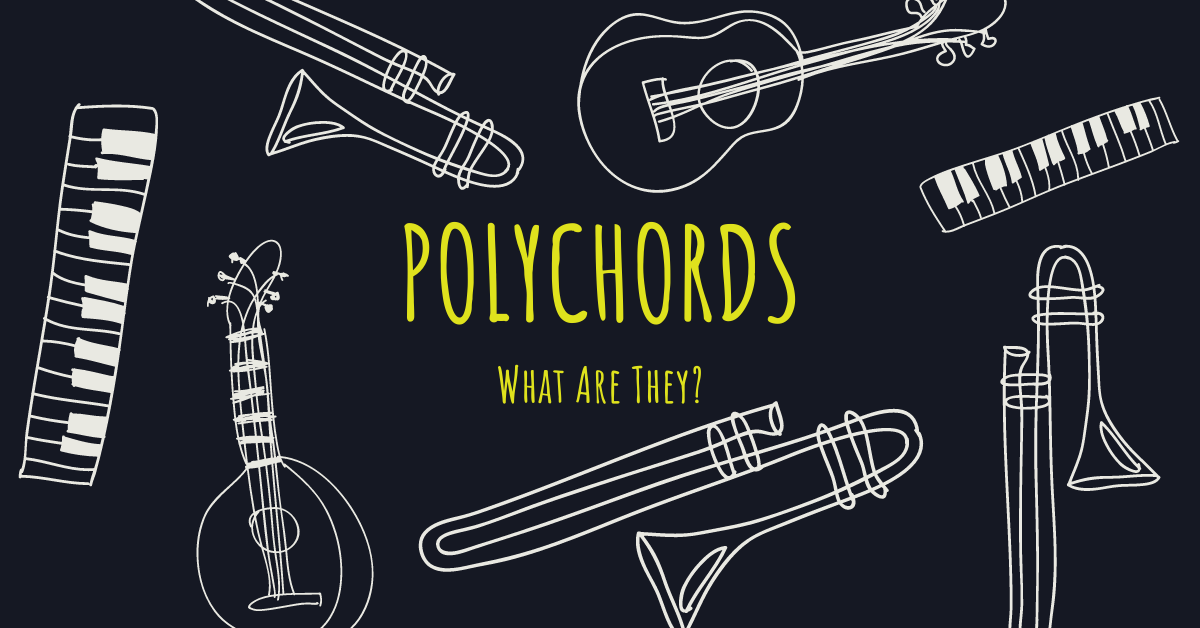Polychords: What Are They?

Polychords are everywhere in music - all kinds of music. And yet polychords are often not fully understood, or even worse, are viewed as "scary" and "difficult," leaving students to dismiss them as too advanced for their own understanding. Well, polychords are not too scary, difficult, or advanced. In fact, they are sometimes used to make advanced chords easier to understand and play. In this article we'll make sense of polychords by doing the following: defining what a polychord is; showing examples of commonly used polychords; explaining the theory behind polychords in order to give students a thorough understanding of how they work. That sounds like a lot, right? Let's go!
Polychords: How To Define Them
Let's break this down into "poly"-"chords." We know what "chords" are, of course. Chords are two or more notes played simultaneously. Major and minor triads are some of the first chords we learn at the piano. "Poly" simply means "more than one" - as in, "two or more." So a polychord is simply a single chord that incorporates two different chords.
Polychords: Examples
Let's first review slash chords before we look at some polychord examples. Slash chords are very closely related to polychords. Remember that slash chords are written using a slash, with a chord indicated on the left of the slash and a note indicated to the right of the slash, as shown below.
In the example above we first see a Dmaj/C. This slash chord tells us to play a D major triad with a 'C' in the bass. The second example tells us to play a C min7 chord with an 'F' in the bass.
Now let's look at some polychord examples.
What are some obvious differences that we see in the writing of polychord symbols? Firstly, the "slash" is now rewritten as a dividing line. Secondly, we see a chord symbol on both the chord above and below the dividing line. This tells us that we have two chords to consider, not simply a chord and a bass note as is the case in slash chords.
So to recap: Slash chords use a "slash" and consist of a chord to the left of the slash, and a bass note to the right. Polychords use a "dividing line" and consist of a chord on top (which is played in the higher register) and a chord on bottom (which is played in the lower register).
Polychords: Understanding the Theory
So, why use polychords? Well, at first glance it seems like these are very advanced chords, right? After all, we're talking about a single chord symbol that requires us to know and play two chords simultaneously. But polychords are often a shorthand for what actually might be more cumbersome and daunting if written out fully.
Consider the following:
Notice that the chords written above are the exact same chords written previously. The only difference is the chord symbols used. In place of polychord symbols, the new chord symbols show the underlying chord with the extensions used in the chord. For example, the first chord symbol shows the C major chord in the bass clef but explains the D major chord as the 9th, #11, and 6th. The second chord shows the D major triad in the bass clef but explains the Ab major triad above as the flat-9th, sharp-11th, and 7th.


